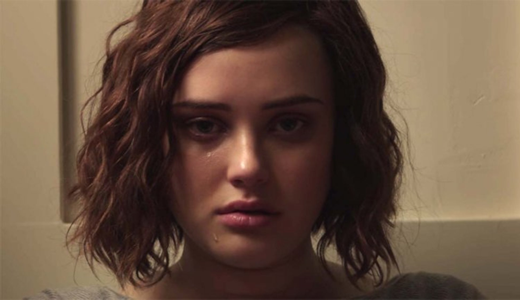When 13 Reasons Why debuted on Netflix two years ago, many voices offered a strong word of caution regarding the graphic depiction of a teenage girl’s suicide in the first season’s final episode. Experts worried that the scene could act as a trigger for young or emotionally vulnerable viewers.
Plugged In reviewer Paul Asay wrote, “The tricky thing about stories like this one is that, for some, it might be just the right message at the right time. But for someone else, the intended message could also be received in a tragically different way.” And, indeed, those concerns seemed justified when research from the National Institutes of Health recently linked the show to an increase in suicides among youths ages 10 to 17.
Now it seems perhaps Netflix has heard that criticism. The streaming service has decided to cut the troubling and graphic suicide scene from the Season 1 finale. The company said in a statement,
As we prepare to launch season three later this summer, we’ve been mindful about the ongoing debate around the show. So, on the advice of medical experts, including Dr. Christine Moutier, chief medical officer at the American Foundation for Suicide Prevention, we’ve decided with creator Brian Yorkey and the producers to edit the scene in which Hannah takes her own life from season one.
The decision to edit out the scene has drawn support from the American Association of Suicidology, the American Foundation for Suicide Prevention, the American School Counselor Association and other organizations.
Parents Television Council president Tim Winter praised the decision, saying, “Netflix has finally acknowledged the harmful impact that explicit content, such as the graphic suicide scene in 13 Reasons Why, is capable of inflicting on children.” But he also called on the company to pay more attention to explicit content in other shows as well: “While we applaud Netflix for making this responsible decision, we call on the company to redouble its efforts to protect children from harmful content. … 13 Reasons Why also isn’t the only Netflix program that targets children with decidedly adult, explicit content.”
New research from the Pew Research Center offers the latest statistical portrait of how much teens are struggling with depression these days—especially adolescent girls. Among 12- to 17-year-olds in 2017, 13% reported having experienced at least one major depressive episode in the last 12 months. But when broken down by gender, it’s clear that young women are struggling more: 20% compared to 7% of young men. And taking a longer view, Pew found that teen depression surged a whopping 59% from 2007 to 2017.
Researchers have often theorized that there’s a connection between the rise in teen depression and the usage of cell phones and social media. But a new Canadian study published in the journal JAMA Pediatrics this week claims to be “the first to present a developmental analysis of variations in depression and various types of screen time,” according to the study’s authors. CNN summarizes the study’s findings, noting that “each one-hour increase in the average time students said they spent on social media was associated with an increase in the severity of depression symptoms within that same year.”
Some parents are struggling so much with their kids’ screen time these days that they’ve taken to hiring coaches to help set limits, according to Good Morning America. Others, meanwhile, are returning to simpler technology, such as an old Walkman or iPod. Why? These outdated technologies allow users to access music, movies and games without constant alerts, text messages and social media updates pulling them into other online activities. Many companies are now rereleasing vintage video game consoles in order to fulfill the demand for nostalgic entertainment.
Others, though, are embracing up-to-the-minute trends when it comes to technology. Many teenagers (and even younger children) now hope to have careers as social media influencers. Video creators who attended this year’s VidCon, a convention for the stars and fans of YouTube, noted that some young people don’t see the point in attending college when they can become an influencer and receive a bunch of free stuff. Some platforms, such as TikTok, will pay up to $1 million for a single 15-second video if a creator is popular enough. As crazy as that seems, according to VidCon attendees, once you make it on TikTok, you can branch out to even bigger platforms, such as YouTube, and make even more money.
But some would-be influencers might be surprised to find out that even this path to fame can be “backbreaking work” in order to create the high-quality videos that fans have become accustomed to. USA Today‘s Jefferson Graham says of this career path’s requirements for success,
It’s a regular full-time job writing, shooting and editing videos and uploading them, adding all the correct tags and descriptions to make sure they get discovered, and that’s just today’s work. On the next day, they have to continue and do it all over again, hustling to build an audience.
But building an audience may also make you a target for painful personal criticism. Nearly decade ago, The Hills‘ reality TV star Heidi Montag infamously underwent 10 different cosmetic surgery procedures in one day—at the age of 23. Now 32, Montag recently admitted that she underwent plastic surgery because of the negative feedback she received about her appearance:
I was way too young to make such a life-changing decision and was under so much pressure because it was the beginning of comment sections and negativity and hate on the internet. I was just really self-involved at the time—like so many young people—but I was also on TV where every perceived flaw is amplified.
Her husband, Spencer Pratt, said of that season of their lives, “Heidi thought people would stop criticizing her [appearance] if she got surgery. … She brought printouts of what the trolls and haters said to the doctor and said, ‘Can we do something about this?’” But attempts to earn others’ approval sadly resulted in even more criticism.
Montag’s story offers a cautionary reminder that online influence is always a two-way street.







Recent Comments